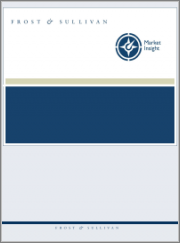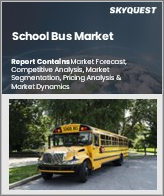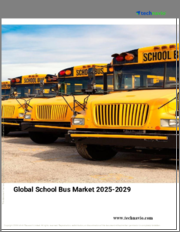
|
시장보고서
상품코드
1319198
세계 스쿨버스 시장의 전략적 기회Strategic Opportunities in the Global School Bus Market |
||||||
수요 회복과 지속적인 전동화 노력으로 성장 촉진
Frost & Sullivan의 세계 스쿨버스 산업에 대한 이 조사 보고서는 성장 환경, 세계 동향, 지역별로 세분화된 스쿨버스 분야에 대한 광범위한 조사에 대해 자세히 분석합니다.
세계 스쿨버스 산업은 COVID-19 이후 시장 수요 회복과 노후 차량 교체가 성장에 기여하면서 4.1% 성장할 것으로 예상되며, 2022년 스쿨버스 총 출하량은 59,346대에 달할 것으로 예상되며, 북미(미국과 캐나다를 합친)가 40,556대로 가장 많은 것으로 나타났으며, 인도 13,659대, 중국 5,131대 순입니다.
미국에서는 바이든 행정부가 초당적 인프라 법안의 일환으로 '클린 스쿨버스(CSB)' 프로그램을 도입하여 기존 화석연료 버스를 저공해 및 무공해 버스로 대체하는 것을 목표로 하고 있습니다. 미국 환경보호청(EPA)은 보다 엄격한 배출 기준을 설정한 온실가스(GHG) 3단계 프로그램을 도입할 예정이며, 이 연방 프로그램의 장점은 환경과 학생들의 건강 모두에 가장 중요한 요소입니다. 이러한 요인들은 북미에서 전기 스쿨버스의 성장을 결정하고, 2030년까지 시장에 큰 영향을 미칠 것입니다. 중국에서는 안전이 학교 교통수단에서 고려해야 할 주요 요소이기 때문에 전기화는 정부에 의해 크게 좌우됩니다. 마찬가지로 인도에서도 정부의 인센티브가 이 분야에 특화되어 있다면 전기 스쿨버스가 부상할 것으로 보입니다.
2022년 러시아-우크라이나 전쟁으로 인해 천연가스 가격이 영향을 받고 있지만, 천연가스 파워트레인이 전기의 대안으로 떠오를 것으로 보입니다. 북미에서는 이미 액화천연가스(LNG)로도 알려진 프로판에 대한 인센티브가 제공되고 있으며, CSB 프로그램의 저배출 가스 범주에 포함되어 있습니다. 인도에서는 압축천연가스(CNG) 스쿨버스가 디젤에 비해 비용 효율적이기 때문에 OEM의 공급이 증가하고 있습니다.
부문 분류에 따르면 2022년 중형 버스가 전체 스쿨버스 산업의 67.4%를 차지하며 시장을 주도하고 소형 버스는 26.2%, 대형 버스는 시장의 6.5%를 차지할 것으로 예상됩니다. 중형 스쿨버스는 더 많은 승객을 태울 수 있고 최적의 운행 효율을 제공하기 때문에 앞으로도 계속 시장을 독점할 것으로 보입니다. 소형 버스는 기동성이 좋고 운행 거리가 적당하기 때문에 도시 지역에서 선호되고 있습니다.
또한, 스쿨버스 텔레매틱스 시장의 성장과 함께 보다 안전한 통학버스 운송과 차량 관리 솔루션으로 인한 운영 비용 절감도 기대되고 있습니다. 인도, 중국 등의 시장에서는 기존 스쿨버스의 안전기준이 개정되어 신기술 안전시스템의 도입을 보장하고 있어, 다른 교통수단보다 규제된 스쿨버스 이용이 더욱 선호될 것으로 보입니다.
목차
전략적 과제
- 왜 성장이 어려워지고 있는가?
- The Strategic Imperative 8(TM)
- 세계의 스쿨버스 시장의 전략적 과제 : 상위 3항목의 영향
- 성장 기회는 Growth Pipeline Engine(TM)
조사 범위
- 분석 범위
- 제품과 기술 부문화
성장 환경
- 세계의 스쿨버스 산업 개요(2022년)
- 세계의 동향이 스쿨버스 시장 전망을 좌우한다(2023-2030년)
- 세계의 스쿨버스 시장 개요 : 지역별(2030년)
성장 기회 분석
- 주요 조사 결과 : 세계의 스쿨버스 시장
- 세계의 스쿨버스 시장 : 지역별 판매대수
- 세계의 주요 성장 지표
- 주요 예측 기준
- 성장 촉진요인
- 성장 억제요인
- 판매대수 예측
- 예측 인사이트
스쿨버스 시장 : 북미
- 지역별 현황 : 북미
- 주요 성장 지표 : 북미
- 판매대수 예측 : 북미
- 파워트레인 예측 : 북미
- HD 파워트레인 예측 : 북미
- MD 파워트레인 예측 : 북미
- LD 파워트레인 예측 : 북미
- 예측 논의 : 북미
- OEM 파워트레인 기술 플랫폼 : 북미
- OEM 프로파일 : Blue Bird Corporation
- OEM 프로파일 : Thomas Built Buses
텔레매틱스와 운전 지원 시스템 개요 : 북미
- 텔레매틱스 시스템 호감도 : 북미
- 운전 지원 시스템(DAS) 호감도 : 북미
총소유비용 : 북미
- 총소유비용 : 파라미터와 가정
- 총소유비용 : 북미의 디젤·NG(천연가스)·ESB 1마일당 운영 비용 비교
전동 스쿨버스(ESB) 개요 : 북미
- 전동 스쿨버스 : V2G(Vehicle 2 Grid) 개요 - 북미
- 전동 스쿨버스(ESB) 사양 : 북미
- ESB 인센티브 북미
스쿨버스 시장 : 중국
- 지역별 현황 중국
- 주요 성장 지표 : 중국
- 판매대수 예측 : 중국
- 파워트레인 예측 : 중국
- HD 파워트레인 예측 : 중국
- MD 파워트레인 예측 : 중국
- LD 파워트레인 예측 : 중국
- 예측 논의 : 중국
- OEM 파워트레인 기술 플랫폼 : 중국
- OEM의 프로파일 : Yutong Bus
- OEM의 프로파일 : Zhongtong Bus
텔레매틱스와 운전 지원 시스템 개요 : 중국
- 텔레매틱스 시스템 호감도 중국
- 운전 지원 시스템(DAS) 호감도 : 중국
스쿨버스 시장 : 인도
- 지역별 현황 : 인도
- 주요 성장 지표 : 인도
- 판매대수 예측 : 인도
- 파워트레인 전망 인도
- HD 파워트레인 예측 : 인도 인도
- MD 파워트레인 예측 : 인도
- LD 파워트레인 예측 : 인도
- 기상 예보 논의 : 인도
- OEM 파워트레인 기술 플랫폼 : 인도
- OEM의 프로파일 : Tata Motors
- OEM의 프로파일 : Ashok Leyland
텔레매틱스와 운전 지원 시스템 개요 : 인도
- 텔레매틱스 시스템 호감도 : 인도
- 운전 지원 시스템(DAS) 호감도 : 인도
성장 기회 유니버스
- 성장 기회 1 : 신흥 시장의 제로 에미션 통학 수송을 향한 대처
- 성장 기회 2 : ESB용 충전 생태계 확대와 V2G 시스템에 대한 주력
- 성장 기회 3 : 더 안전하고 수익성 높은 통학 수송을 위한 첨단 안전성과 텔레매틱스 솔루션
다음 스텝
- 다음 스텝
- 왜 Frost & Sullivan인가, 왜 지금인가?
- 별지 리스트
- 면책사항
A Recovering Demand and Ongoing Electrification Efforts Bolster Growth
This Frost & Sullivan report on the global school bus industry provides an in-depth analysis of the growth environment, global trends, and an extensive examination of the school bus space segmented by region.
The global school bus industry is expected to grow at a 4.1% rate as market demand experiences a rebound after the pandemic, with replacement for aging fleets contributing to growth. In 2022, the total school bus shipments rose to 59,346 units, and the largest share went to North America (combining the United States and Canada), with 40,556 school buses sold in 2022, followed by India with 13,659 buses and China with 5,131 buses.
In the United States, the introduction of the 'Clean School Bus' (CSB) program as part of the Bipartisan Infrastructure Law by the Biden administration aims to replace current fossil fuel buses with low- and zero-emission buses. The benefits of this federal program are paramount to both the environment and the health of school children, as the Environmental Protection Agency (EPA) will introduce the Green House Gases (GHG) phase 3 program with stricter emission norms. These factors will determine the growth of electric school buses in North America, with significant market penetration by 2030. In China, electrification will largely depend on the government, as safety is the main factor it considers in school transportation. Similarly, electric school buses will gain ground in India if the government incentives are structured specifically for this segment.
As an alternative to electric, the natural gas powertrain will gain momentum, although natural gas prices have been affected by the Russo-Ukrainian War in 2022. North America already provides incentives for propane, also known as liquefied natural gas (LNG), and it is included in the CSB program under the low-emission category. In India, compressed natural gas (CNG) school bus offerings see boosting from OEMs as CNG is cost-effective compared to diesel.
Regarding segment classification, in 2022, medium-duty buses led the market with 67.4% out of the total school bus industry, light-duty buses reached 26.2%, while heavy-duty constituted 6.5% of the market. Medium-duty school buses will continue to dominate the market as they offer higher seating capacity with optimal efficiency in operations. The light-duty segment is preferred in urban areas due to its easy maneuverability with moderate operating distance.
With electrification in the anvil, the focus on advanced driver assistance systems (ADAS) is expected to gain prominence as safety norms for school buses in North America are more advanced compared to other markets; and while the telematics market for school buses is poised to grow, there is an expectation for safer school transportation and reducing operation costs through fleet management solutions. The revision of existing school bus safety standards in markets like India and China will likely ensure the introduction of new technology safety systems, which further contribute to the preference for regulated school bus usage over other forms of transport.
Table of Contents
Strategic Imperatives
- Why is it Increasingly Difficult to Grow?
- The Strategic Imperative 8™
- The Impact of the Top 3 Strategic Imperatives on the Global School Bus Market
- Growth Opportunities Fuel the Growth Pipeline Engine™
Study Scope
- Scope of Analysis
- Product and Technology Segmentation
Growth Environment
- Primary Highlights of the Global School Bus Industry in 2022
- Global Trends will Influence the Future of the School Bus Market (2023 to 2030)
- Snapshot of the Global School Bus Market by Region in 2030
Growth Opportunity Analysis
- Primary Findings: Global School Bus Market
- Global School Bus Unit Sales by Region
- Key Global Growth Metrics
- Main Forecast Criteria
- Growth Drivers
- Growth Restraints
- Unit Sales Forecast
- Forecast Discussion
School Bus Market: North America
- Regional Snapshot: North America
- Key Growth Metrics: North America
- Unit Sales Forecast: North America
- Powertrain Forecast: North America
- HD Powertrain Forecast: North America
- MD Powertrain Forecast: North America
- LD Powertrain Forecast: North America
- Forecast Discussion: North America
- OEM Powertrain Technology Platforms: North America
- OEM Profile: Blue Bird Corporation
- OEM Profile: Thomas Built Buses
Telematics and Driver Assistance Systems Overview: North America
- Telematics Systems Favorability: North America
- Driver Assistance System (DAS) Favorability: North America
Total Cost of Ownership: North America
- Total Cost of Ownership: Parameters and Assumptions
- Total Cost of Ownership: North American Diesel, NG, and ESB Operational Cost per Mile Comparison
ESB Overview: North America
- Electric School Bus: Vehicle 2 Grid (V2G) Overview-North America
- Electric School Bus (ESB) Specifications: North America
- ESB Incentives: North America
School Bus Market: China
- Regional Snapshot: China
- Key Growth Metrics: China
- Unit Sales Forecast: China
- Powertrain Forecast: China
- HD Powertrain Forecast: China
- MD Powertrain Forecast: China
- LD Powertrain Forecast: China
- Forecast Discussion: China
- OEM Powertrain Technology Platforms: China
- OEM Profile: Yutong Bus
- OEM Profile: Zhongtong Bus
Telematics and Driver Assistance Systems Overview: China
- Telematics Systems Favorability: China
- Driver Assistance System (DAS) Favorability: China
School Bus Market: India
- Regional Snapshot: India
- Key Growth Metrics: India
- Unit Sales Forecast: India
- Powertrain Forecast: India
- HD Powertrain Forecast: India
- MD Powertrain Forecast: India
- LD Powertrain Forecast: India
- Forecast Discussion: India
- OEM Powertrain Technology Platforms: India
- OEM Profile: Tata Motors
- OEM Profile: Ashok Leyland
Telematics and Driver Assistance Systems Overview: India
- Telematics Systems Favorability: India
- Driver Assistance System (DAS) Favorability: India
Growth Opportunity Universe
- Growth Opportunity 1: Action Toward Zero-emission School Transportation in Developing Markets
- Growth Opportunity 2: Expanding Charging Ecosystem for ESBs and Focus on V2G Systems
- Growth Opportunity 3: Advanced Safety and Telematics Solutions for Safer and Profitable School Transportation
Next Steps
- Your Next Steps
- Why Frost, Why Now?
- List of Exhibits
- Legal Disclaimer



















